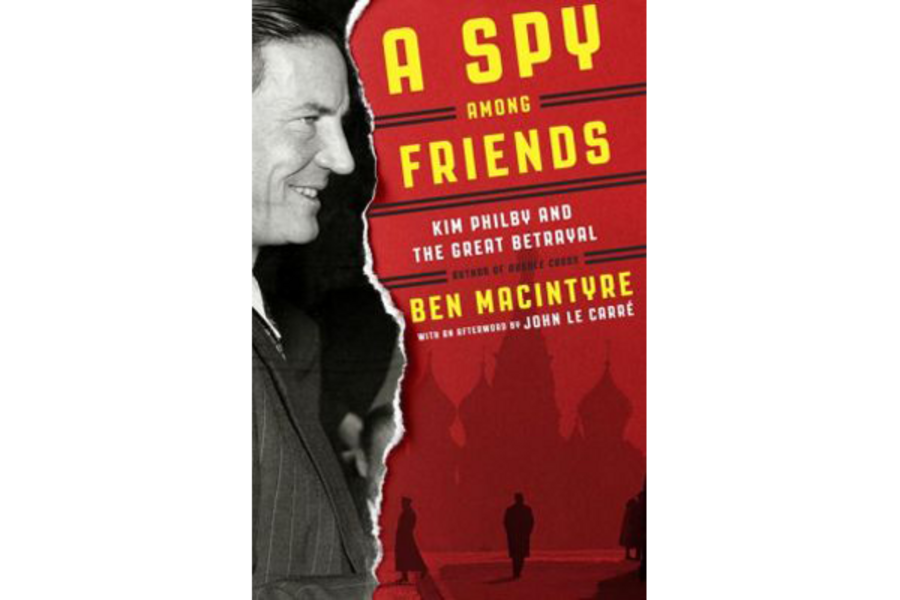'A Spy Among Friends' is an absolutely captivating book about the Kim Philby case
Loading...
The British equivalent to Benedict Arnold is probably Kim Philby. Smart, articulate and charming, Philby rose to a very senior position in MI6 – Britain’s intelligence agency, roughly comparable to the CIA in the United States – and had access to his nation’s most closely guarded secrets during the Cold War. Unfortunately, he gave almost everything he knew to the Soviet Union.
Philby, along with several other “clever, angry and alienated young men” – Donald McLearen, Guy Burgess, Anthony Blunt and, probably, John Carincross – were part of a Soviet spy ring recruited at Cambridge University in the 1930s. Their story, and Philby’s in particular, has fascinated readers interested in spy craft and espionage ever since he was exposed more than 50 years ago. Unfortunately, like so many things connected with Cold War skullduggery, there is much about the Philby case that we do not know because the British and American files remain closed, presumably to cover up the damage done to Western interests and the great embarrassment to the relevant spy agencies.
Ben Macintyre, a writer for the Times of London and the author of several well-received books about intelligence activities during World War II, has written an absolutely captivating book about the Philby case and the milieu in which he operated. Like Macintyre’s other books, A Spy Among Friends is extensively researched, well-written, and a terrific read.
Philby was a “conventional upper class, public school-educated Englishman” who graduated from Trinity College, Cambridge in 1933, and quickly began to work for the Soviet Union. Because he lived in a society where one’s background and education were deemed sufficient character reference, Philby was accepted into the British intelligence service during World War II without too many questions being asked. This proved to be a big mistake.
Eventually, Philby was simultaneously a Soviet spy and the agent in charge of Britain’s anti-Soviet Intelligence activities. This meant he could tell Moscow what Britain was doing to counter Soviet espionage as well as how Britain was spying on Moscow. For example, he gave the Russians an early alert of undercover operations which allowed them to round up the spies before the operations began. In the case of “Operation Valuable,” an espionage campaign in Albania, MacIntyre concludes that between 100 and 200 Albanian guerillas died because of Philby’s perfidy. Yet despite the huge number of Philby-run actions that failed, his competence and loyalty were never questioned.
Macintyre’s book is not just about Philby; it’s also an extensive commentary on the role of friendship and camaraderie within the small world of international espionage. Two senior spies and close friends, Nicholas Elliott and the CIA’s James Angleton, never suspected Philby until it was too late. But their trust was so total that they gave him plenty of top secret information that Philby would not otherwise have seen and by doing so facilitated his success. Still, it wasn’t just the bad judgment of a few friends that was the problem, it was the whole culture of the British upper class that assumed a man’s background was an adequate basis for complete trust and confidence. Even Eleanor, Philby’s wife in Beirut, never suspected he was a Soviet agent.
Mcintyre writes: “No one likes to admit they have been utterly conned. The truth was simpler, as it almost always is: Philby was spying on everyone and no one was spying on him because he fooled them all.”
Even Philby’s unmasking was bungled. Suspicions first arose when he was First Secretary at the British embassy in Washington, DC in 1951. When his friends and fellow Cambridge spies Donald McClean and Guy Burgess fell under suspicion and fled to Moscow, Philby was summoned to London and extensively interrogated. MI5, the British equivalent of the FBI, was convinced of Philby’s guilt but was unable to prove it. Still, doubts had been sown and Philby resigned from MI6 to avoid being fired. But, in October 1955, he was exonerated on the floor of the House of Commons by Prime Minister Harold McMillian. Several months later, after years of unemployment, Philby became a Middle East correspondent for “The Economist” and “The Observer” and moved to Beirut. He quickly went back to work for the Soviets by passing along confidential information from his unsuspecting friends who worked for MI6 and the CIA.
When the British finally caught on in late 1962, it was left to his old friend Elliott to determine the extent of Philby’s betrayal through a series of interviews at a safe house in Beirut. During the debriefing, Philby suddenly fled to Moscow. Historians have long wondered how Philby could escape during an interrogation but Macintyre concludes it was easy: the British let him walk away. Rather than risk the enormous embarrassment of a public trial in London, the British stopped trailing him and so he hopped on a Russian freighter and left town.
The ambiguity over his disappearance illustrates the many unanswered questions that surround this case. Most of these will only be answered when the relevant records are released, something unlikely to occur anytime soon. Even the statements of the principals are of limited value because, as the author notes, “spies more than most people invent the past to cover up the mistakes.” Macintyre is a careful investigator and he resists the temptation to go beyond the available data. His conclusions seem fully justified – even when they differ from others who have examined the case. Any analysis of the Philby affair will have holes that even a third-rate novelist would avoid. But then, real world is much messier and, at the same time, far more interesting.
Until future historians have the complete records, this book will serve well as the definitive record of this compelling story.






